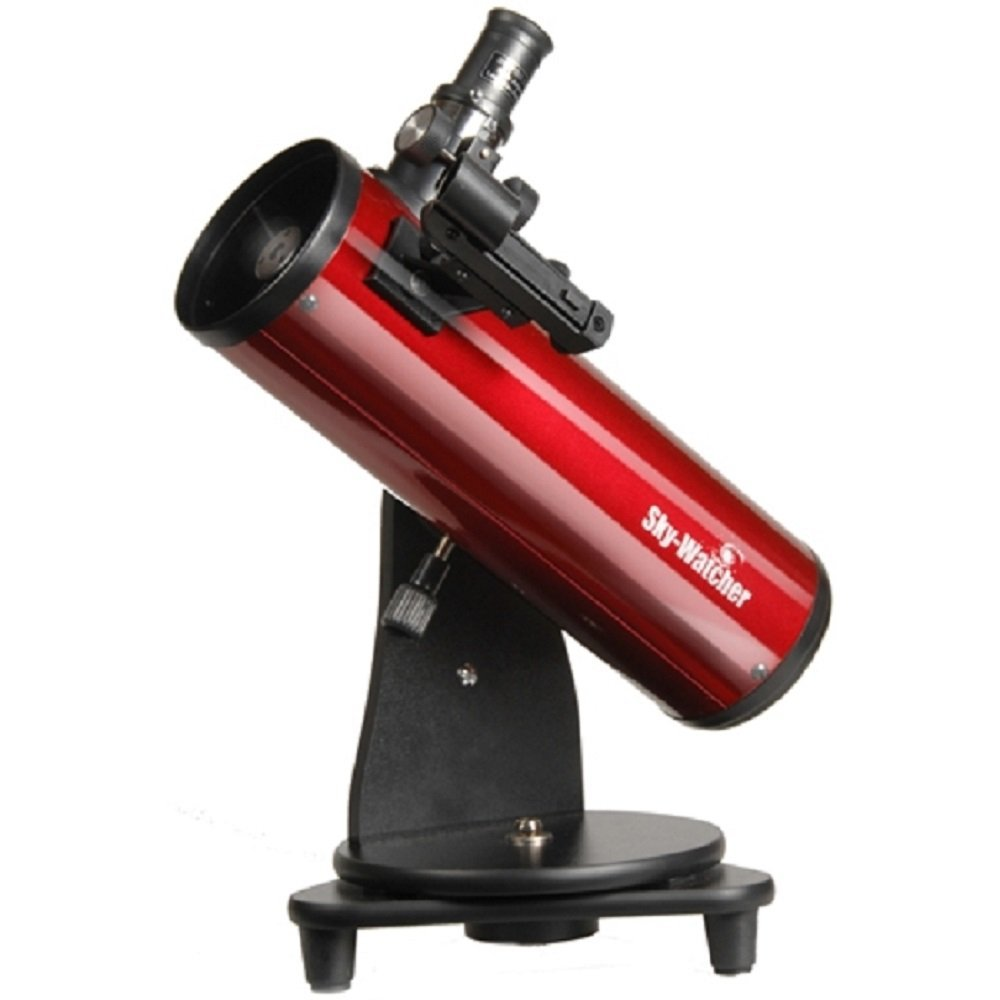

Unlike all previous push-to scopes, StarSense does not use hardware encoders on the telescope axes, nor does it need to be input with your location, date and time, nor aimed at and aligned on several stars to begin the night’s viewing. The dock’s adjustable cradle can accommodate large phones, but not tablets. With the phone in place (right), its camera looks into the mirror to see the sky. The dock’s mirror has a plastic protective cover (left). StarSense allows “push-to” finding of objects - an app on your phone shows you where to move the telescope to locate an object you have selected, and then indicates when you are on target. StarSense is technology unique to Celestron that works so well I think it somewhat obsoletes all other entry-level telescopes.

I tested the 8-inch f/6 StarSense, using a unit sent by Celestron for review before its official announcement. Celestron has at last brought out StarSense-equipped versions of new Dobsonian reflectors in two popular sizes: 8- and 10-inch.

The telescope comes with a cloth bag for storing the dock. To prevent it being damaged, remove the dock when transporting the telescope. The StarSense dock itself clamps into a holder that comes bolted to the tube. They then fasten the dock to their own Dobsonian telescopes to create home-brew StarSense Dobs. But what about us more experienced observers? Can’t we have the convenience of computer-aided finding on a serious telescope, one with enough aperture to show us deep-sky objects in detail?Įnough people thought the same that many have been buying low-cost StarSense scopes just to cannibalize them for the phone bracket or “dock,” and the “unlock code” needed to activate the app. It’s all very well having computer-aided pointing on small scopes made for beginners. When I reviewed Celestron’s first StarSense Explorer telescopes (see my test at AGT of the DX 102AZ, a four-inch refractor), I thought, “Wouldn’t this technology be great on a larger Dobsonian reflector?” Credit: Alan DyerĬelestron expands their StarSense technology to more serious telescopes with greater aperture. When aimed at the zenith, the eyepiece height is 44 inches (1.12 meters). Just add an eyepiece, and mount the phone into the dock to begin observing. The StarSense Dobsonian tube slides into the mount’s sideboards for quick assembly.


 0 kommentar(er)
0 kommentar(er)
